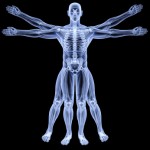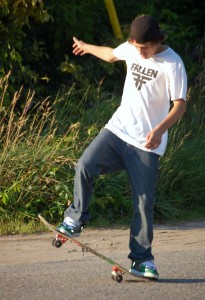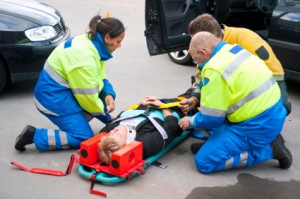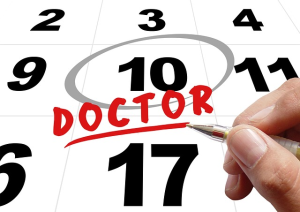Traumas Cause Subluxations

Any trauma that your body experiences has the potential to upset and damage the structural balance in your body, which can cause slight subluxations. These slight structural distortions create abnormal stresses. These stresses pinch, stretch or compress your nerves, which affects your muscles, internal organs, glands, discs, bones and even your brain.
Subluxations can cause general overall body malfunctions or even dis-ease. Dis-ease can result in fatigue, premature aging, arthritic changes, muscular weakness, and altered function of your internal organs.
Minor Accidents

Even minor accidents have the potential to cause a subluxation. Something that starts out as a simple fall, a bump, a jar, a shake-up, or a whiplash can cause subluxations. Chiropractic patients often find out later in life that childhood traumas are the cause of their current discomfort or distress. Just because you do not suffer a broken bone from an injury does not mean that your body did not experience a significant trauma.
Millions of people leave an emergency room visit thinking that everything is okay, when in fact it my not be. Hidden distortions in your normal body structure can cause problems at a later date if left untreated.
Automobile & Serious Accidents
 We want to emphasize that we are not against necessary medical care. In emergencies doctors must do whatever they can to save life and limb. After significant traumas are treated the healing process begins and that is where chiropractic can assist in getting back to health more quickly. Our bodies have miraculous healing capabilities that we have seen time and time again. Chiropractic helps the body heal itself by removing the road blocks to the body healing itself.
We want to emphasize that we are not against necessary medical care. In emergencies doctors must do whatever they can to save life and limb. After significant traumas are treated the healing process begins and that is where chiropractic can assist in getting back to health more quickly. Our bodies have miraculous healing capabilities that we have seen time and time again. Chiropractic helps the body heal itself by removing the road blocks to the body healing itself.
Post-Accident Physical & Mental Health Problems
Many people suffer for years after a serious accident, taking medications for pain and suffering post-accident conditions may include pain or spasms in the neck, shoulders, arms, wrists, hands, legs, back and face. There have even been reports of scoliosis (sideways twisting of the spine) occurring after a significant trauma. Personality changes are also common after traumas. Symptoms may include insomnia, mental dullness, nervousness, anxiety, depression, constipation, diarrhea, headache, hearing problems, and even epilepsy, allergies and dizziness. Other post-trauma symptoms can include asthma, bed-wetting, vomiting, loss of energy, incontinence, urinary tract infections, vision problems, blindness and even hyperactivity in children. All of these symptoms have been helped by chiropractic care.
Work Related Injuries
Did you know that:
- Back pain is responsible for more loss of work time and increased medical expenses related to treatment than any other ailment.
- Neck and back damage account for more that 90% of work injuries.
- Our chiropractic can get injured workers out of pain and back to work fast; with lower treatment costs compared to other forms of treatments.
Our staff can fill out claim forms, and process your claim. If you need time off work, we can communicate with your employer, so they know your intention is to return to work as soon as you can safely do your job.
It is important to receive care from a chiropractor following a work injury, not only to stop the pain, but also to rehabilitate the affected area. Without proper care, it is more likely that an industrial injury could later reoccur.
How common are work related injuries?
Musculoskeletal disorders of any cause are among the most prevalent medical problems, affecting 7% of the population and accounting for 14% of physical visits and 19% of hospital stays. When looking specifically at cases involving days away from work, the Bureau of Labor Statistics reports that in 1994, approximately 32% of all illness cases were the result of overexertion or repetitive motion. This figure includes back injuries.
In Conclusion
Anyone who has suffered a significant trauma or been in an accident, no matter how mild or serious, or how long ago, should see us about having their structural system checked for nerve pressure caused by subluxations. A chiropractic adjustment can make the difference between life with pain, disability or sickness and life with full recovery, activity and health.
Sources:
Lantz CA. The vertebral subluxation complex. International Review of Chiropractic. September/October 1989; 37-61.
Lantz CA. The vertebral subluxation complex part 1. An introduction to the model and the kinesiological component. Chiropractic Research Journal. 1989; 1(3); 23-36.
Lantz CA. The vertebral subluxation complex part 2. The neoropathological and myopathological components. Chiropractic Research Journal. 1990; 1(4); 19-38.
Bracker MD, Ralph L.P. The numb arm and hand. Am Family Phys. 1995;5191):103-116.
Fortinopoulos V. Scoliosis and subluxation. Int’l Chiro Ped Assn. July/August 1999.
Mumenthaler M. Headache in chronic acceleration injury of the cervical spine. Schweizer Archiv fur Neurologic und Psychiatric. 2006; 157(4):163-168.
Gukelberger M. The uncomplicated post-traumatic cer1972.vical syndrome. Scand J Rehabilitative Med. 1972;4:150-153.
Di Stefano G, Radanov BP. Course of attention and memory after common whiplash. Acta Neurol Scand. 1995; 91:346-352.


